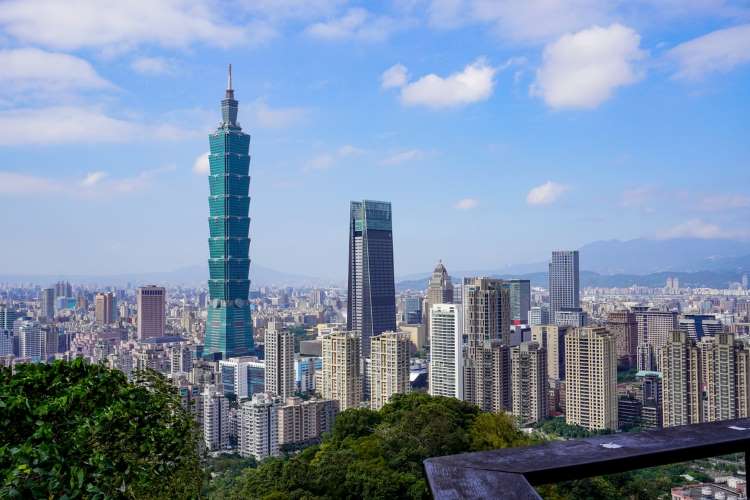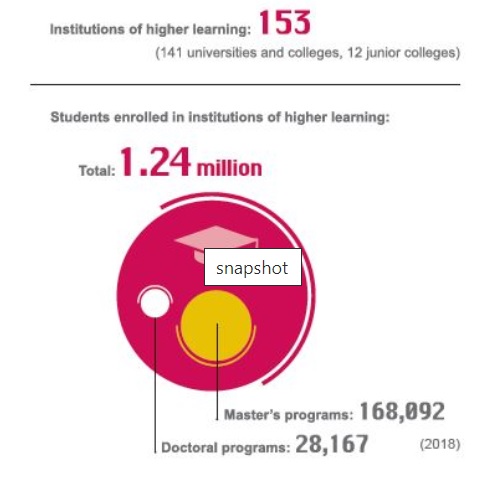
Education policy and Taiwan miracle: Before 2000, Taiwan had been widely admired as one of the four Asian Tigers that achieved great economic progress through industrialisation. The millennium saw the country breaking away from the other tiger economies to establish itself as an advanced industrial nation that accounts for more than 60% of the global semiconductor production. A lot of credit should be given to the pragmatic education policy that can be emulated by the emerging market economies in Asia and elsewhere.
Taiwan, a country roughly the size of Kerala and a population two-thirds of the Indian state, has 126 registered universities. The country is looking to collaborate with other Asian nations in the field of education under the New Southbound Policy, initiated by President Tsai Ing-wen. Education and people-to-people contact are the focus areas of this policy that looks to promote economic and cultural ties with countries in Southeast Asia, South Asia, Australia and New Zealand.
READ I The New Education Policy: Twenty ideas that will shape India’s education system
Education policy powered Taiwan miracle
Traditionally, education is a non-profit sector and a governmental responsibility in Taiwan as in other East Asian countries. There is an old saying: “It takes 10 years to nurture a tree, but a hundred years to train a man.” Without much natural resources, Taiwan depends on human capital to power the economy and needs to invest intelligently. Between 1955 and 1970, the expenditure on education rose from 2% to 4.6% of the GDP, and from 11% to 20% of the national budget. Since then, there has been a steady increase in investment; educational expenditure was 5.97% of the GDP and 24% of the budget in 2020.
Taiwan miracle, the island nation’s rise as an advanced industrial nation, has a lot to do with the flexible education policy that promoted technological and vocational education that distinguished the country from other East Asian nations. To build a non-agricultural labour force, the government increased the intake in vocational high schools from 40% to 70% between 1963 and 1980. This contributed to export-oriented development by creating a highly skilled labour force.

This period between 1963 and 1980 also saw the emergence of a competitive examination system for university admission, leading to improvements in Taiwan’s research and development capabilities. The intake into departments was aligned to the requirements of the job market which helped establish a supply- demand balance. The flexibility of the education system helped Taiwan achieve high economic growth coupled with low unemployment rates.
Demand for higher levels of technological and business human resource shot up in the 1980s due to the changing requirements from globalisation of economies. Technology firms in Taiwan’s science parks needed high quality human resources for semiconductor manufacturing units. Taiwan upgraded its junior colleges into technology universities and students in vocational education streams were evaluated by different methods for entry into higher education institutions.
READ I The five futures that the New Education Policy promises
Upon completion of credits requirements, students in the vocational track may shift to universities under the dual track system. Currently, the ratio of students in academic high schools and vocational high schools is 1:1, which mirrors the needs of industrial development. nMore and more students and parents are realising the importance of acquiring a professional skill in career development.
The ministry of education has initiated an industry-academia cooperation project that offers students paths to different career opportunities by combining core academic knowledge with occupational knowledge. Through internships, the students become familiar with machines and management skills. This prepares students for employment in industries immediately after graduation.
Many of Taiwan’s traditional industries and technology companies have moved across the strait to China. In response to the transformation of the industrial structure and rising per capita income, Taiwan opened up its job market to foreign workers in 1989. This allowed the country to tap global human resources to address the labour shortage.
To sustain Taiwan’s strength in innovation, the government has introduced the 5+2 Innovative Industries Plan which covers Asia Silicon Valley, green energy, defense industry, smart machinery, biomedical industry, new agriculture and circular economy. The ministry of education is part of the efforts to utilise the industry-academia cooperation project to cultivate skilled professionals.
READ I Opportunity beckons India’s higher education sector
Government to government collaboration
The New Southbound Policy has been formulated to help partner countries cultivate young talent and identify new directions of career growth. Taiwan’s ministry of education established the Industry-Academia Collaboration Program for Indonesian 2-year College (2+i Programme) according to the industrial talent requirement raised by the Indonesian government. In March 2019, the first batch of 88 students was enrolled in four classes, while 355 students joined the programme in 2021. The students who are part of this programme acquire professional knowledge and learn Mandarin.
The 2+i Programme has established professional courses based on the needs of the Indonesian economy in mechanical engineering, civil engineering, information engineering, tourism and leisure, hospitality and hotel management, and electrical engineering. Taiwan universities are offering scholarships equivalent of free tuition and miscellaneous fees for the first year. The Indonesian government will provide students with flight tickets to Taiwan, and monthly living expenses of NT$24,000 (USD 858) from the second year.
Taiwan universities work closely with industries to improve the employability and functional competence of students to suit Indonesia’s development needs. The university also offers Mandarin language courses. The 335 Indonesian students are among the 1,097 students who came to Taiwan in 2021 through different industry-academia collaboration programmes between the universities of the two nations.
India-Taiwan collaboration in education
There has been a surge in demand for electronic devices that has resulted in a chip shortage in almost every industry. Taiwan can help India develop and cultivate talent for this industry. The Indian government needs to identify subjects in this field and establish cooperation projects between Indian and Taiwanese universities. Taiwan can offer world-class training in component technology, materials technology, physics, very large-scale integration (VLSI) design and application, advanced process equipment, and packaging, electronic materials and chemistry.
Taiwan’s Asia University and Yuan Ze University have initiated a joint degree programme for students pursuing the M Tech in VLSI design at SASTRA University, Tamil Nadu. The programme, which started in August 2021, is fully supported by Tata Electronics Pvt Ltd (TEPL). Students of the programme spend the first year at the campus in Tamil Nadu and the second-year curriculum will include practical experience in major lab facilities and a six-month internship in Taiwan’s semiconductor industry. The students also get basic Mandarin language skills. Furthermore, TEPL will offer job opportunities to students, making it an attractive prospect.
Higher education institutions in the two nations have already signed 618 MOUs. Taiwan expects more Indian universities to set up Taiwan Education Centres at their campuses to offer their students and faculty information on scholarships, student exchange programmes, faculty exchange programmes, research cooperation, MOU signing, and training programmes. In 2019, there were 2,783 Indian students in Taiwan, most of them in PhD programmes. Prime Minister Narendra Modi’s Act East Policy can strengthen Indo-Taiwan engagement in the field of education and boost economic ties.
Government-to-government collaboration can ensure the direction of the engagement and quality of students. This will also help achieve the goal of globalisation for higher education institutions, envisaged in the National Education Policy 2020. Taiwan’s ministry of education is keen to strengthen research and cooperation in professional fields to create a mutually beneficial collaboration between the countries. India and other Asian nations can learn a lot from the flexible education policy that made Taiwan miracle possible.
(Peters Chen is Director, Education Division, Taipei Economic and Cultural Center in India.)
